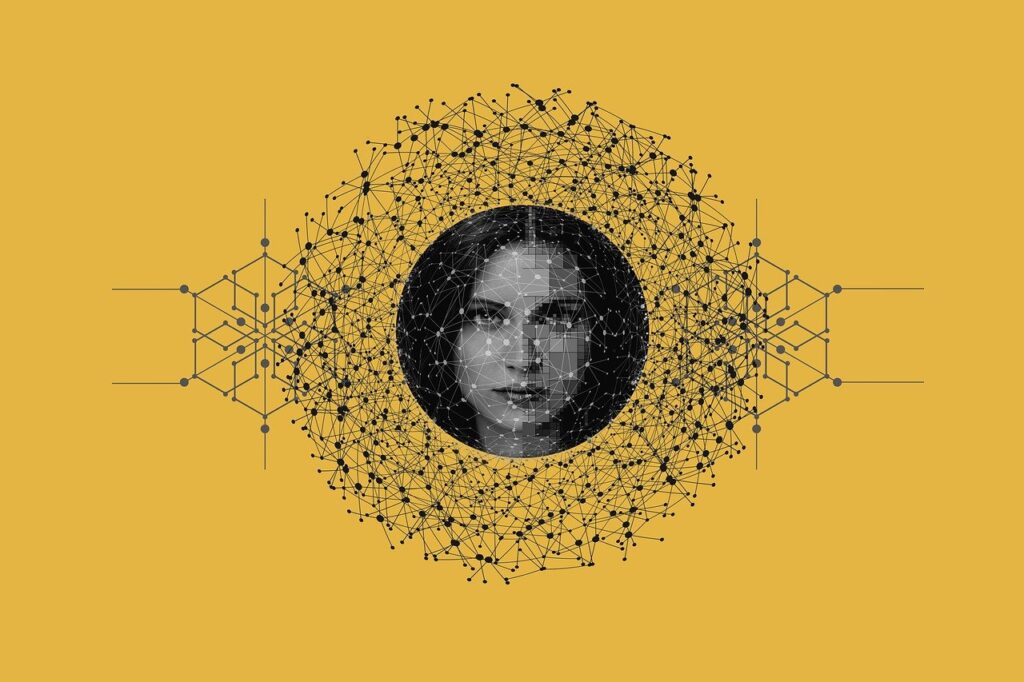Facial recognition (FR) can invade privacy when governments, companies, or attackers, collect facial images without consent. Chameleon- an AI model is a solution that creates a personalized privacy protection mask (P3-Mask) to stop unauthorized FR. This article explains the Chameleon AI model, a recent innovation conducted by the Georgia Institute of Technology to protect privacy in facial recognition.
Facial Recognition Introduction
Facial recognition (FR) is used in every sector, like government, businesses, healthcare, and individuals, as it enhances security and convenience. The facial patterns are captured and matched to known faces in the databases.
In the past, Artificial Intelligence and machine learning have improved the accuracy of these systems, making them more effective at identifying people in diverse settings. Several FR models are available online and can easily recognize individuals if they have access to a facial database.

But why does facial recognition need protection? Because there is a significant privacy risk when FR systems are misused. Technologies like Clearview AI, deepfake AI image generators, and others are collecting end user’s images from the internet without consent, leading to identity theft, cyber threats, misuse of biometrics, unauthorized access to confidential data, and so on.
Rise Of Chameleon- AI Model
These privacy threats to identity have led to the development of the Chameleon AI model, an anti-FR technology that allows users to process and shield their facial images using digital masks before sharing them online.
It works efficiently by generating one mask per user, preserves image quality, and strengthens the mask’s resistance against unknown FR models. It also helps with secure FR authentication using the P3-Mask as a de-obfuscation key.
According to the authors, an anti-FR technology must have the following four properties:
- Robustness: The protected facial images should not be identifiable by any FR model.
- Efficiency: Protection should happen instantly on any device, even without advanced hardware, to ensure accessibility for all users.
- Perception Usability: The protected images should still look similar to the original image to human viewers and should not be distorted by noise.
- Service Usability: Users should have the ability to grant permission for authorized FR services without compromising their privacy.
Chameleon AI Model: A Solution to Protect Privacy
Chameleon is a user-centric facial privacy protection system that alters facial images, creating variations that are imperceptible to the human eye but confuse facial recognition algorithms. Unlike traditional disguises or crude filters, Chameleon’s approach ensures users maintain a natural appearance while digitally masking their identity. This offers individuals a way to interact online or in monitored public spaces without being easily identified.
How Does The Chameleon Model Work?
The Chameleon AI model was developed by researchers, namely, Ka-Ho Chow, Sihao Hu, Tiansheng Huang, and Ling Liu at Georgia Institute of Technology. The model was developed using advanced AI techniques and ensemble learning.
Chameleon protects user’s photos by applying a unique P3 mask to them before sharing them online. The AI model learns the user’s facial signature from a few images, generating a mask that works for any image of the same user.
Then, the mask is applied instantly to photos using a face detection model on the user’s device. The user can authorize trusted services to restore the photos for facial recognition using a special de-obfuscation key.
Features Of Chameleon AI model
- Chameleon outperforms other anti-FR models, such as OPOM, TIP-IM, and Fawkes, in protecting against unknown facial recognition (FR) systems.
- Chameleon provides instant protection with better results.
- Chameleon allows users to share their P3 masks with trusted third parties to restore facial recognition.
- It saves costs on storage and network.
- The correct mask is used to reverse the protection and restore full recognition accuracy.
- It can work on devices with low computing power.
- Chameleon also preserves image quality, making the protected images similar to the originals but ensuring they can’t be matched to the person’s true identity.
Challenges To Chameleon Model
- using an incorrect mask significantly lowers accuracy, showing that only the right mask can ensure proper recognition.
- Chameleon’s protection would face challenges when reversing protection because the same P3-Mask is needed for both obfuscation and de-obfuscation.
- Reproducing this exact mask is not possible since it requires the original clean images and random states.
- Common methods like JPEG compression or filters can’t effectively undo the protection, as Chameleon’s design makes it highly resistant to these attempts, ensuring strong privacy protection.
Practical Applications Of The Chameleon Model
Chameleon has immense utility across sectors where privacy is paramount:
- Social Media: Protecting user identities in uploaded photos.
- Surveillance Mitigation: Safeguarding activists and journalists in authoritarian regimes.
- Data Sharing: Enabling secure and anonymous biometric data transfer.
Conclusion
Chameleon provides a solution to unauthorized facial recognition (FR) by creating a personalized P3-Mask for each user. This mask offers quick and lightweight protection while maintaining image quality.
It also allows users to grant permission for trusted FR services to recognize their faces using the same mask. Chameleon uses a smart method to select a strong team of FR models to ensure the P3-Mask is robust against unknown FR systems.
This innovation holds the potential for protecting privacy on social media, countering surveillance misuse, and ensuring secure biometric data handling. With dynamic adaptability, Chameleon represents a significant step toward ethical AI, balancing technological advancement with individual rights.